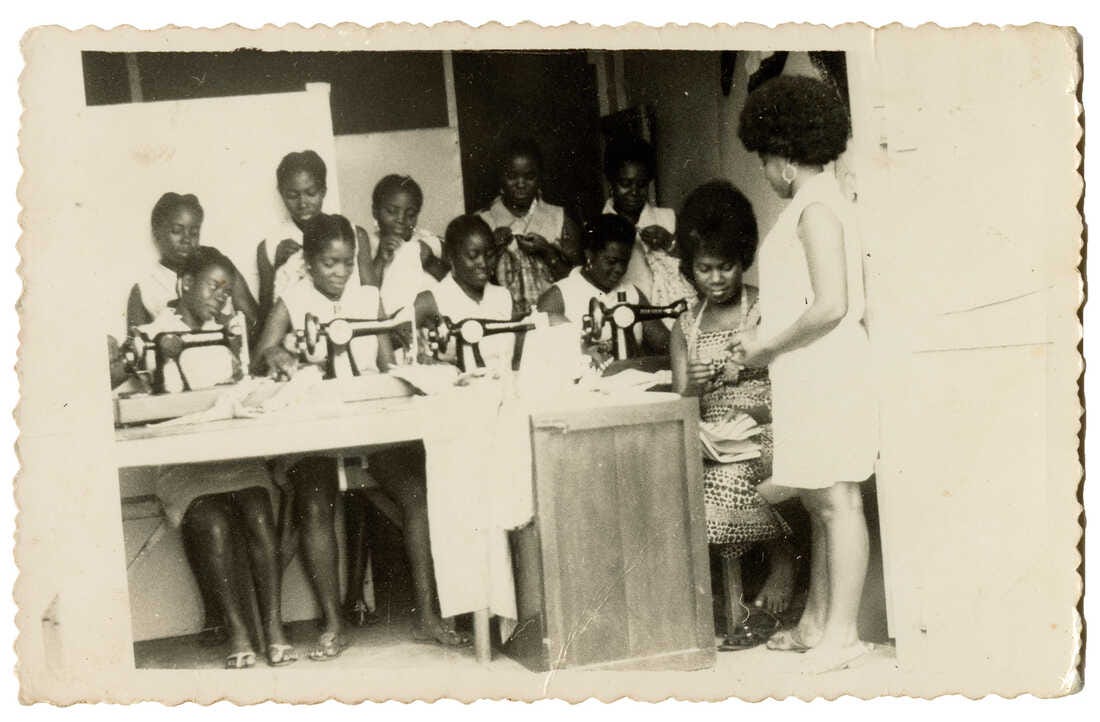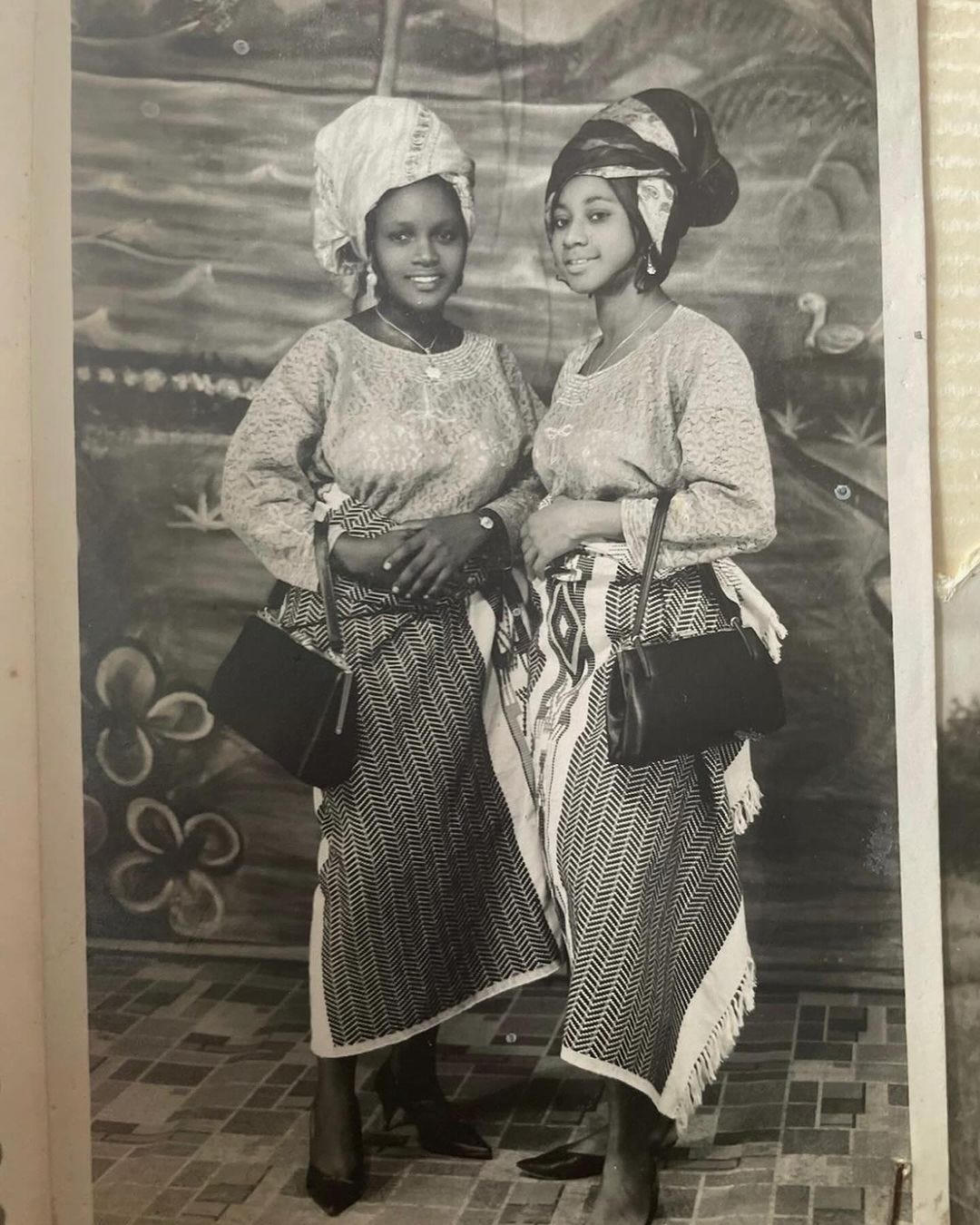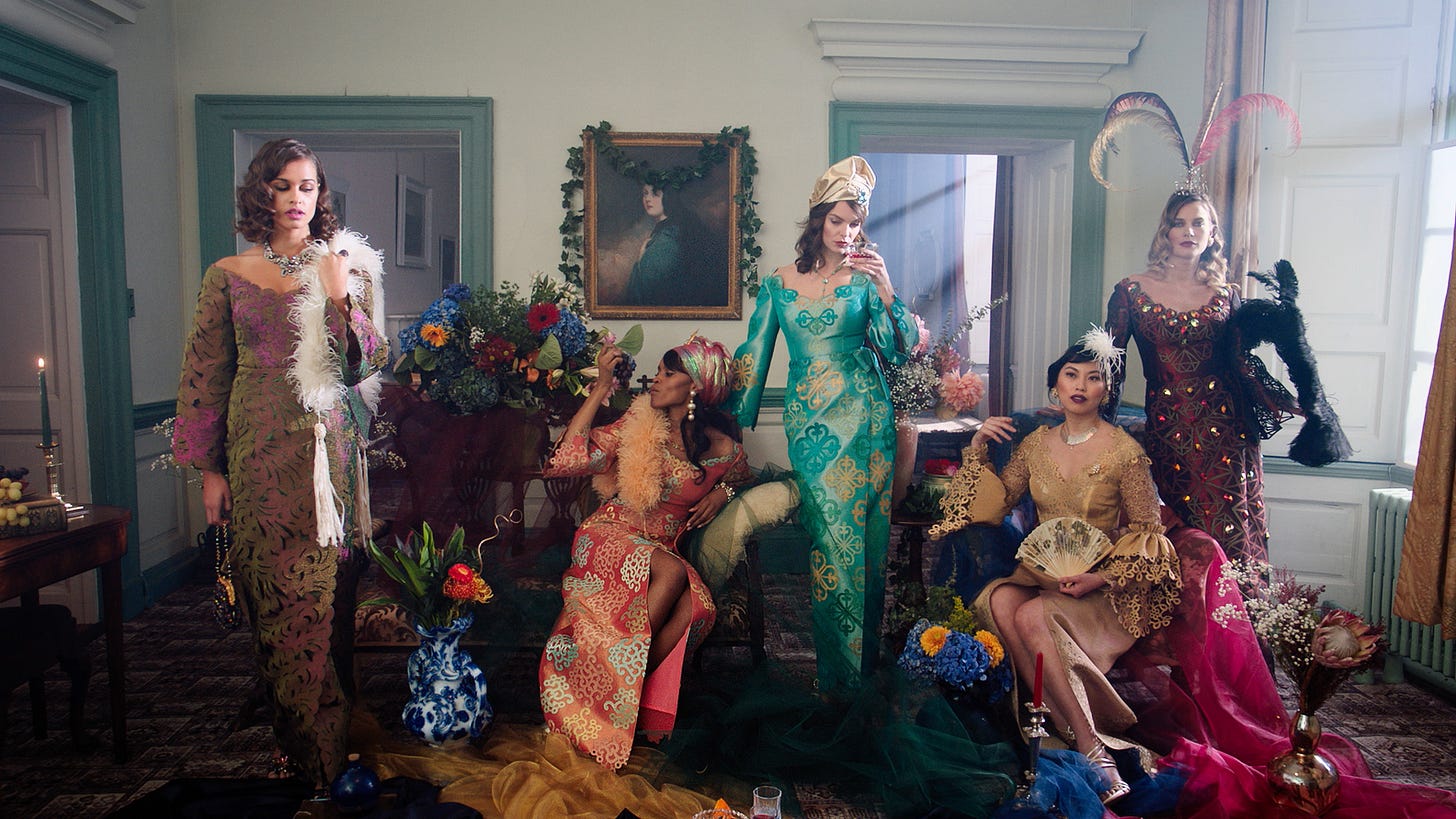“Give the Corsets and Shine Shine a Rest!”
Technology has always been instrumental to how Nigerian women fashion themselves. With social media, Nigerians are negotiating identity through bridal dresses. Are Nigerian designers listening?
The 2010s ushered us into a new era for Nigerian bridal fashion. Since the 1800s, technology such as the sewing machine and present-day social media, has been central to how Nigerian women fashion themselves. Drapery was consistent in Nigerian bridal styles until the 2010s when Western demands and the pressure to impress the internet overwhelmed the emerging fashion industry. By 2016, Nigerian weddings had become a spectacle and some individual weddings, an internet sensation. The flow, fluidity and dance in our use of fabrics were gone!

“Nigeria to the World”
But, what happens when different aspects of Nigerian identity are produced and heavily marketed online? I’ll admit, seeing the increasing global success of Afrobeats artists and Nigerian creatives online feels really good. However, the distinction between online commentary on individual fashion choices and curated celebrity images has become increasingly ambiguous. An example of this ambiguity was when a Twitter (now X) user captioned a video of a bride and her aso-ebi ladies downloaded from Tiktok, “Why did they eat up the bride like this???😭😭😭😭”
Out-of-context and ungraceful online interactions with the bride’s dress made from aso-oke - a fabric with strong local ties and historical significance forced people to share their reservations about our current wedding fashion. There were so many conversations happening at once between Nigerians and non-Nigerians alike. Why should the dress need an explanation? Who is qualified to speak on Nigerian culture and fashion? Why are designs taking inspiration from the West considered aesthetically superior to those steeped in the local context?
“#RejectModernityEmbraceTradition”
Nigerians home and abroad agreed on one thing - #RejectModernityEmbraceTradition. Out with the new - corsets, sequins and thigh-high slits. In with the old - iro and buba with gele. The shared longing for the old look may come across as mindless nostalgia however, it’s an indication that something is missing in current bridal fashion.
I won’t pretend I have the answer, but a closer look at our history may offer some perspective. Let’s go back to the mid to late 1800s when the first sewing machines landed in West Africa. Initially stationed in colonial fortresses and primarily used to produce clothes for the transatlantic slave trade, these machines - expensive for the time, were eventually democratised, becoming possessions of African elites. To paint a picture of how important they were considered at the time, Catherine E McKinley prefaces in her book - The African Lookbook: A Visual History of 100 Years of African Women:
“For African women across the continent, many of the most powerful but less remarked upon modern legacies were born of the sewing machine and the camera.” 1
As more West Africans had access to the sewing machine at the turn of the 20th century, a sartorial language transcending ethnic notions of dress emerged. Featured on bride price lists, the sewing machine became a tool for economic freedom. Women who couldn’t sew rented it out to seamstresses.
I imagine that access to the sewing machine - as with most technologies, didn’t automatically confer the skills to operate it. So, drapery becoming a staple in the local fashions of the century was an innovative response to the constraint of fewer seamstresses fielding requests for the growing taste in machine-sewn clothes. From the Igbo double wrapper to the Ibibio/Efik Usobo and the Yoruba iro, draped clothing weaved its way through Nigeria’s cultures.
Victorian-era dress took on a new life in the hands of these seamstresses. As Catherine McKinley describes it, “...it comes in a very wide, usually shapeless dress with smocking or lace ruffles.” They were fluid, straight cuts in a dance with the wind and true to form on all bodies.
These dresses and wrappers invite the wearer to participate in the design of the dress - a constant reminder that dress-making doesn’t end when hemming and stitching are done. The movement and fluidity in a lot of the styles of the time showed up in Nigerian wedding dresses lasting into the first decade of the 21st century.
“I want to be Snatched”
The movement and fluidity in our dress sense gave way to a world where in the words of Bobrisky, "everyone wants to be snatched.” It all started with one woman and brand - Deola Sagoe. While the corset doesn’t feature prominently in the brand’s collection, her experimentation with lace-patterned aso-oke, slimmer cuts and, Western-inspired silhouettes defined the current look for Nigerian brides. Her quest to find a global audience and inject cash into the local economy in the first half of the 2010s reinvented the look of the Nigerian bridal dress and made it fashion with a capital “F.”2 At a time when Nigerian weddings were gradually becoming a global spectacle, especially with the rise of blogs like Bella Naija, Deola Sagoe’s over 20 years of experience perfectly positioned her to sense the zeitgeist of the time and pivot to designing Nigerian bridal dress.
The brand started the first collection for Nigerian bridal dresses, however, more designers have hopped on that train. Once celebrities in the US started wearing different iterations of corsets and corset-inspired clothing showed up in some designers' fall/winter collections in 2019, Nigerian bridal designers went all in on corsets. Style by Ruvero, Veekee James, and Tubo Bereni, are some of the designers that have made the corsetted look their brand’s signature.
“Are Corsets the Answer?”
At the core of traditional bridal fashion were 2 things - movement and sustainability. Traditional bridal fashion featured a lot of drapery, offering women the chance to participate in moulding the dress to their bodies, and it was sustainably designed for the lives of these women. The iro, for instance, lives many lives - cover cloth, wrapper, headwrap, the list is endless. On the other hand, the heavily corsetted bridal dresses are one-dimensional. Beyond the flat image online, these dresses offer no world of possibilities after the wedding.
Apart from the lack of sustainability, this tired use of corsets in bridal dresses is symptomatic of a growing skill gap in dress construction in our fashion industry. The top corset-related queries on Google Trends are all about DIY-ing them with local fabrics.3 Social media usage is to Nigerian fashion today what the sewing machine was to our fashion sensibilities in the 1800s. While the women in the 1800s contextualised the construction of Victorian-era dresses, the bridal designers today slap corsets on local fabric without any innovation in construction.
One could argue that these designers are merely following the trend in search of profitability. That’s fair, fashion is a business. However, fashion houses like Ejiro Amos Tafiri4 and Dye Lab5 are proof that there is a market for dresses that move.
Considering Deola Sagoe’s five-year run to find a market for lace-patterned aso-oke, fabric manipulation has also become core to our traditional bridal fashion. It doesn’t have to be iro and buba, double wrapper and lace blouse, or Onyoyo, but we need contextually-relevant dresses. Let’s see dresses that bounce and take up space, fabric manipulation, clothes designed for women’s bodies and the context of these wedding ceremonies. The last time Nigerians negotiated identity online with Deola Sagoe’s bridal collection in 2018, innovation in bridal dress design took a nose-dive. This time around, I hope Nigerian bridal designers are listening and taking notes - corsets aren’t the answer.
Notes and Gratitude
This article is the first of a 2-part series on Nigerian wedding fashion. In August 2023, I shared a video essay with my findings researching the evolution of Nigerian wedding fashion in the 2010s. Since I published that video essay and, inspired partly by events on social media, I have had time to think about the research, expanding on the ideas in the video. This first part tries to answer the question of innovation in the design of Nigerian bridal dresses, and the second part will be a deeper dive into digital technologies (more specifically, social media) and their affordances in shaping the evolution of Nigerian bridal fashion witnessed in the 2010s. Thank you for reading!
Grateful to Lese, Funmi and Chisom who took the time to edit this article - their feedback brought it to life.
The African Lookbook: A Visual History of 100 Years of African Women
The Evolution of Nigerian Wedding Fashion in the 2010s (section titled: Western Influence)
The Evolution of Nigerian Wedding Fashion in the 2010s (section titled: Bridgerton Effect)





This was an amazing article. Truly enjoyed reading it.
This was an interesting read. Will definitely be checking out the links you mentioned for extra reading.